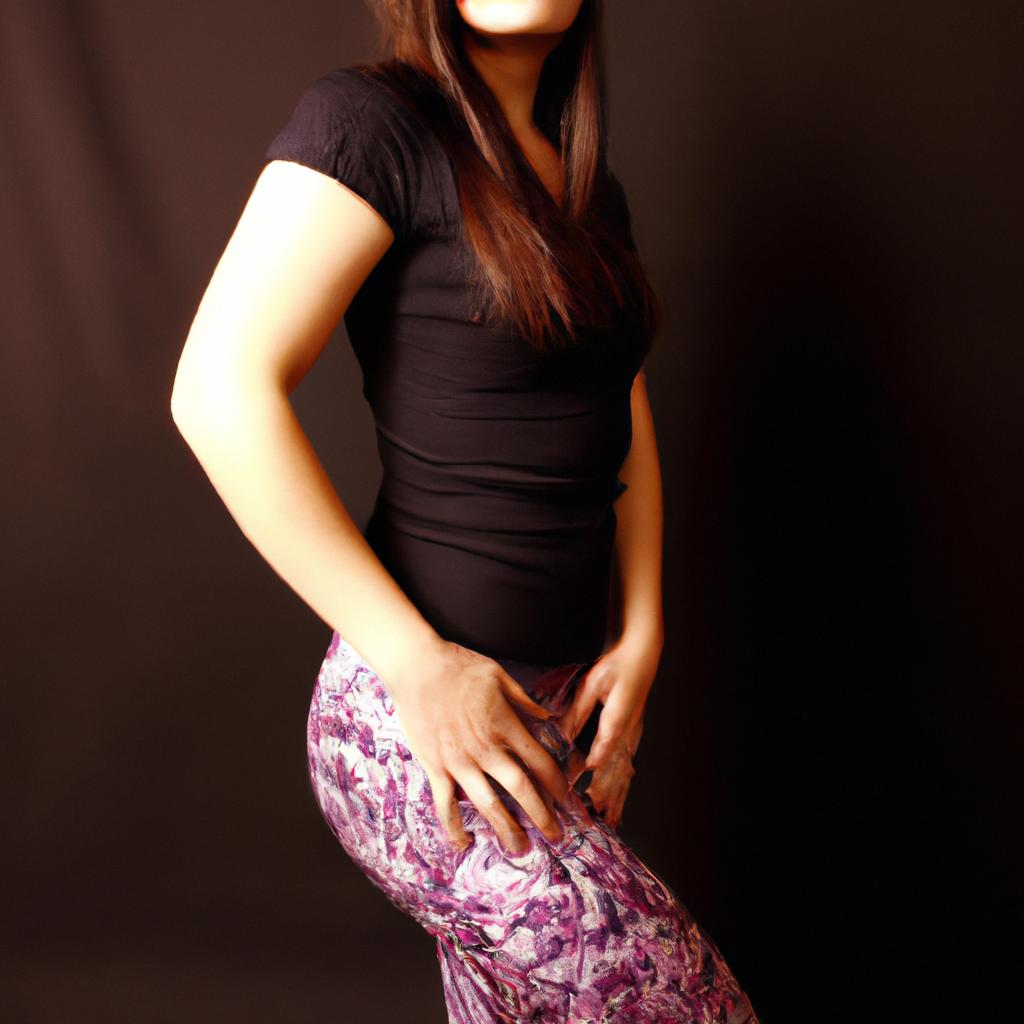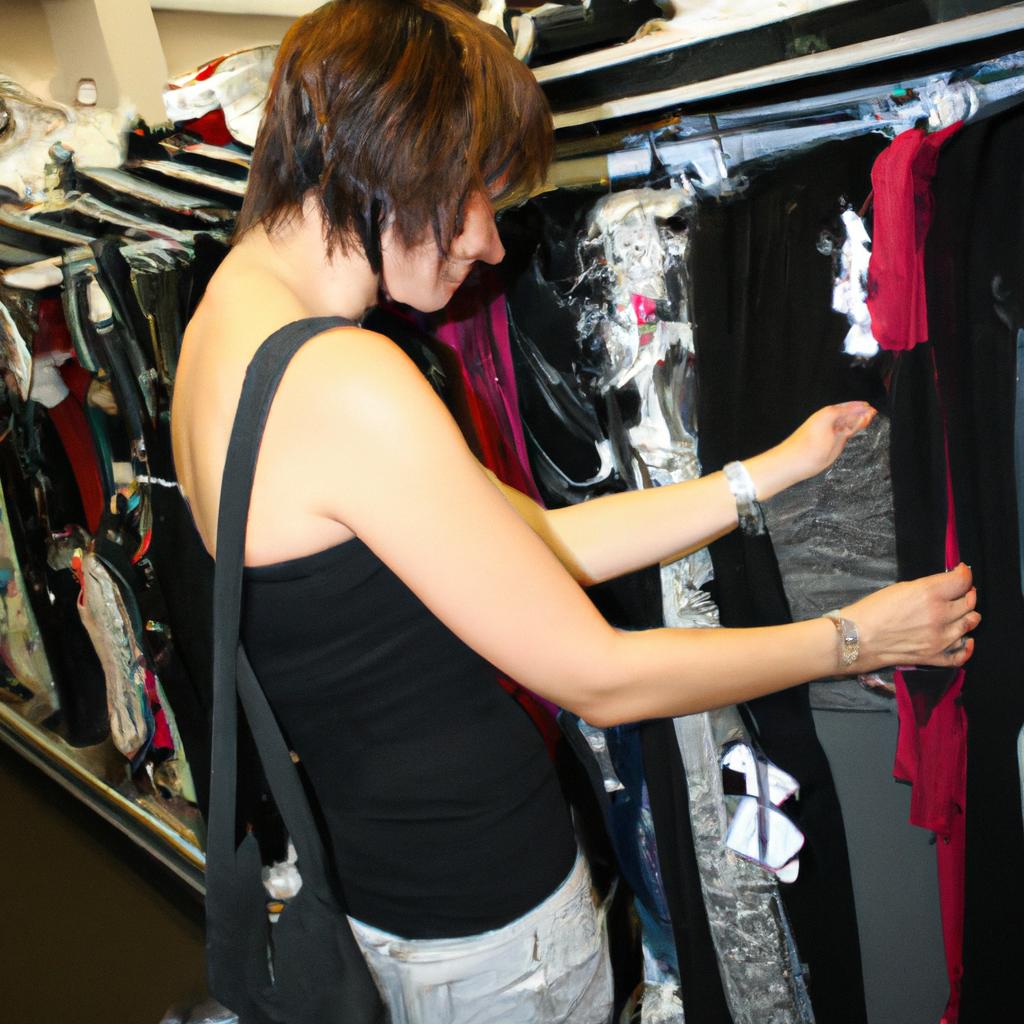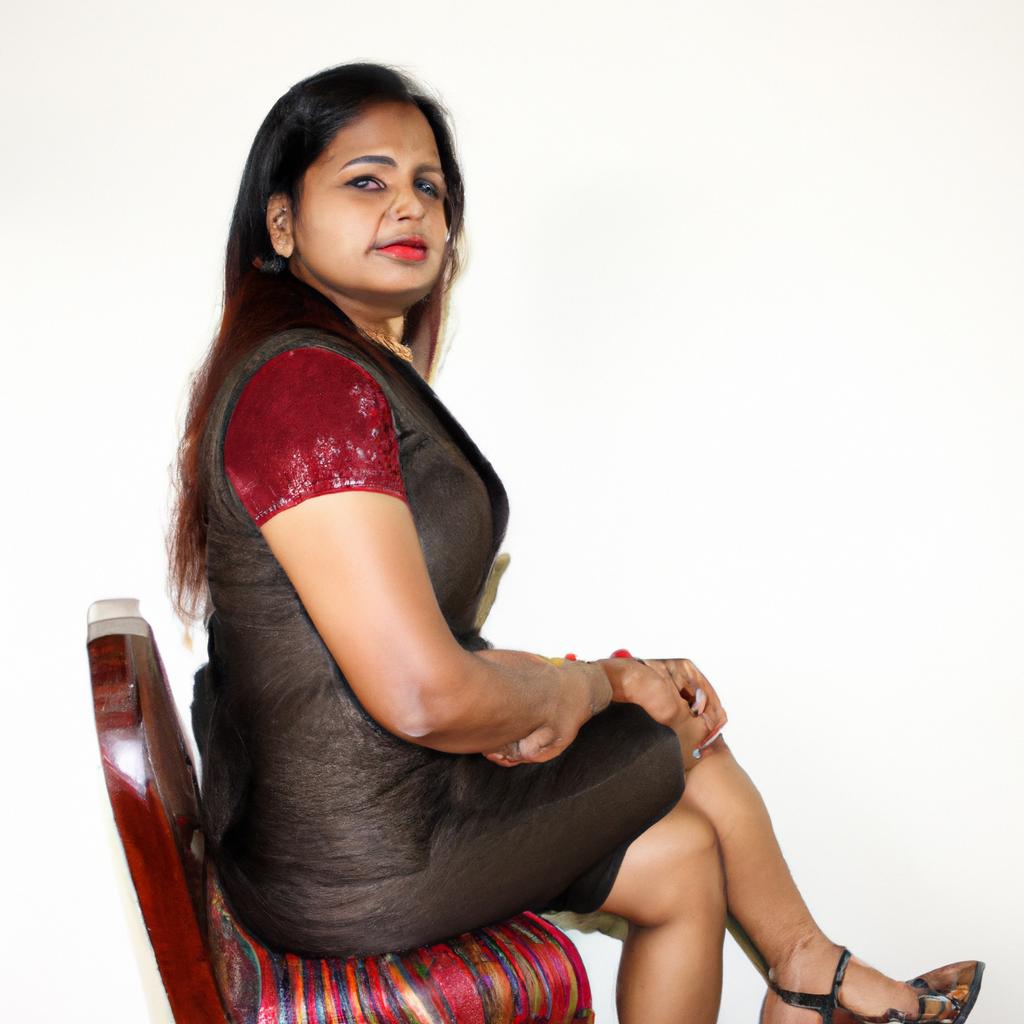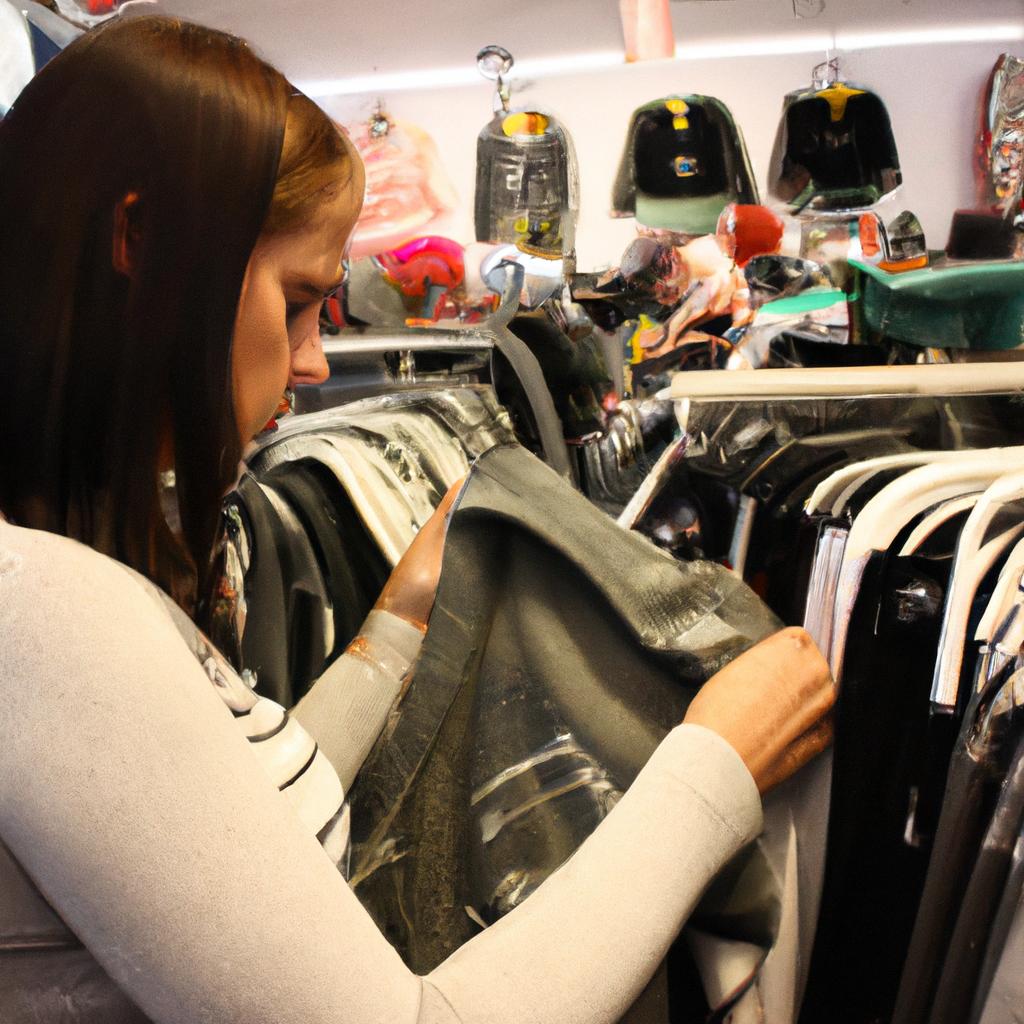Fashion Finance: Women’s Clothing Trends

In the ever-evolving landscape of fashion, understanding the dynamics of women’s clothing trends is crucial for both consumers and industry stakeholders. Fashion finance plays a significant role in analyzing the financial aspects associated with these trends, encompassing market demand, pricing strategies, and profit margins. This article aims to explore various dimensions of fashion finance within the realm of women’s clothing trends by examining real-life case studies and hypothetical scenarios, shedding light on the intricate relationship between economic factors and fashion choices.
One such example that exemplifies the interplay between fashion finance and women’s clothing trends can be found in the rise of sustainable fashion. In recent years, there has been a surge in consumer awareness regarding ethical production practices and environmental sustainability. As a result, many clothing brands have had to adapt their business models to align with this growing trend. By investing in eco-friendly materials, implementing fair trade practices, or adopting circular economy principles, these brands not only cater to an increasingly conscious consumer base but also capitalize on a niche market segment that values sustainability. Understanding how financial decisions impact product development and marketing strategies in relation to sustainability will provide valuable insights into navigating this evolving terrain.
Sustainable fashion and its impact on women’s clothing trends
Sustainable fashion has gained significant attention in recent years, influencing women’s clothing trends. This movement emphasizes environmentally friendly practices throughout the entire lifecycle of a garment, from production to disposal. For instance, Stella McCartney, a renowned designer known for her commitment to sustainability, utilizes innovative materials such as recycled polyester and vegan leather to create fashionable pieces that align with eco-conscious values.
The impact of sustainable fashion on women’s clothing trends can be observed through several key developments. Firstly, consumers are increasingly demanding transparency when it comes to the sourcing and manufacturing processes of their clothing. They want to know where their garments come from and how they were produced. As a result, brands have started incorporating supply chain information into their marketing strategies, enabling customers to make more informed choices.
In addition to conscious consumerism, sustainable fashion has also sparked creativity within the industry. Designers are now experimenting with alternative materials like organic cotton, hemp fiber, and bamboo fabric while exploring new dyeing techniques that minimize water usage and chemical waste. These innovations not only reduce environmental impacts but also offer unique textures and aesthetics in women’s clothing.
To further illustrate the emotional connection between sustainable fashion and women’s clothing trends:
- Markdown bullet point list:
- By choosing sustainable clothing options, individuals contribute towards preserving natural resources for future generations.
- Sustainable fashion empowers wearers by allowing them to express their values through their style choices.
- Supporting ethical fashion helps protect workers’ rights in the apparel industry.
- Investing in quality sustainable garments often leads to longer-lasting wardrobes and reduced overall consumption.
Moreover, a visual representation in the form of a markdown table:
| Benefits of Sustainable Fashion |
|---|
| Environmental preservation |
| Worker rights protection |
As we move forward into discussing influencer marketing in the fashion industry – an essential aspect driving women’s clothing trends – it is important to acknowledge the role of sustainable fashion in shaping consumer preferences and industry practices. The commitment towards sustainability not only aligns with environmental consciousness but also serves as a driving force for innovation and creativity within the realm of women’s clothing.
Influencer marketing in the fashion industry: How it drives women’s clothing trends
Sustainable fashion has undoubtedly made a significant impact on women’s clothing trends in recent years. As consumers become more conscious of the environmental and social implications of their choices, they are increasingly seeking out sustainable options when it comes to their wardrobe. This shift is evident in various aspects of the fashion industry, from the materials used in clothing production to the ethical practices employed by brands.
For example, let us consider a case study on a well-known fashion brand that has embraced sustainability as its core value. XYZ Fashion Company has successfully incorporated sustainable practices throughout its supply chain, including using organic cotton for its garments and ensuring fair labor conditions for workers. By doing so, XYZ Fashion Company not only appeals to environmentally-conscious consumers but also sets an example for other brands to follow suit.
The influence of sustainable fashion on women’s clothing trends can be observed through several key factors:
-
Material choices: Sustainable fashion encourages the use of eco-friendly fabrics such as organic cotton, hemp, or recycled materials like polyester made from plastic bottles. These materials offer alternatives to traditional ones that may have negative impacts on the environment and human health.
-
Ethical manufacturing processes: Brands embracing sustainable fashion often prioritize fair trade and responsible sourcing practices. They ensure that workers involved in garment production receive fair wages and work in safe conditions.
-
Slow fashion movement: Sustainable fashion promotes a move away from fast-paced consumerism towards a more mindful approach to purchasing clothes. The focus shifts from buying cheaply-made, trend-driven pieces that quickly end up discarded, towards investing in high-quality items with timeless designs meant to last longer.
-
Consumer awareness: Increased education and awareness about sustainability issues have played a crucial role in shaping women’s clothing trends. Consumers now actively seek out information about how their clothes are produced before making purchases, creating demand for sustainably-produced options.
To illustrate these points further, we present below a table showcasing some popular sustainable fashion brands along with their unique selling points and materials used:
| Brand | Unique Selling Points | Materials Used |
|---|---|---|
| ABC Sustainable Style | Fair trade, carbon-neutral production | Organic cotton, recycled polyester |
| DEF Eco Chic | Zero waste manufacturing, upcycling | Hemp, Tencel |
| GHI Ethical Fashion | Artisan-made pieces, community empowerment | Bamboo, linen |
| JKL Green Couture | Transparency in supply chain, closed-loop system | Recycled nylon, regenerated cashmere from post-consumer waste |
As the sustainable fashion movement continues to gain traction, it is clear that its impact on women’s clothing trends will only grow. The next section explores another significant trend that has reshaped the fashion industry: the rise of athleisure wear and its influence on women’s fashion. By seamlessly blending style with comfort and functionality, this trend has revolutionized how women approach their everyday outfits.
The rise of athleisure wear and its influence on women’s fashion
The Rise of Athleisure Wear and Its Influence on Women’s Fashion
Athleisure wear, a trend that combines athletic and leisure clothing styles, has gained significant popularity in recent years. This fashion movement blurs the lines between activewear and everyday attire, providing women with comfortable yet fashionable options for various occasions. To illustrate this influence, let us consider an example: Sarah, a young professional who leads an active lifestyle while also valuing style and comfort. She often wears athleisure pieces such as leggings or joggers paired with stylish sneakers when going out with friends or running errands.
Athleisure wear has transformed women’s fashion by challenging traditional norms and introducing new possibilities into their wardrobes. Here are some key ways it has shaped the industry:
- Versatility: Athleisure wear offers versatility like never before. It allows women to seamlessly transition from a workout session to social activities without compromising on style or comfort.
- Blurring Boundaries: The rise of athleisure wear has blurred the boundaries between casualwear and active apparel. Now, women can effortlessly incorporate sporty elements into their everyday outfits.
- Embracing Comfort: In today’s fast-paced world, comfort is paramount. Athleisure wear prioritizes functionality while still maintaining trendy aesthetics, reflecting society’s increasing emphasis on wellness and self-care.
- Encouraging Confidence: Wearing athleisure pieces empowers women to feel confident in their bodies and embraces diverse body types. This shift towards inclusivity promotes positive body image ideals within the fashion industry.
To further emphasize the impact of athleisure wear on women’s fashion trends, we can examine a comparison table showcasing its evolution over time:
| Traditional Clothing | Athleisure Wear |
|---|---|
| Structured Silhouettes | Relaxed Fit |
| Formal Fabrics | Performance Materials |
| Limited Range of Colors | Bold Prints & Vibrant Hues |
| High Heels | Sneakers & Comfortable Footwear |
This table visually demonstrates the shift from traditional clothing to athleisure wear, highlighting the transformation in silhouettes, materials, color choices, and footwear preferences. Such changes reflect both societal shifts towards more casual and health-conscious lifestyles as well as fashion’s response to these demands.
Transitioning into the subsequent section about “The role of technology in shaping women’s clothing trends,” it is evident that athleisure wear has significantly impacted the industry by challenging conventions and providing a new perspective on what constitutes fashionable attire for women. As we explore further, we will delve into how technology plays an integral role in driving these trends forward.
The role of technology in shaping women’s clothing trends
The rise of athleisure wear and its influence on women’s fashion has undoubtedly made a significant impact in recent years. However, it is not the only factor that has shaped trends in women’s clothing. Technology has played a crucial role in transforming the way we perceive and engage with fashion. From innovative fabrics to virtual try-on experiences, advancements in technology have revolutionized the industry.
To illustrate this point further, let us consider the case study of an online retailer that specializes in sustainable fashion for women. By leveraging technological tools such as augmented reality (AR), they offer customers the opportunity to virtually try on their garments before making a purchase. This immersive experience allows shoppers to see how different outfits would look on them without physically trying them on, enhancing convenience and reducing returns.
The impact of technology goes beyond just virtual try-ons. Here are some ways in which technology has influenced women’s clothing trends:
- Enhanced customization options: With 3D printing and other technologies, it is now possible to create customized garments tailored specifically to individual body measurements and style preferences.
- Sustainable practices: Technology has enabled innovations in textile production, leading to the development of eco-friendly materials and processes that reduce waste and environmental impact.
- Accessible shopping experiences: E-commerce platforms equipped with advanced search algorithms and personalized recommendations make it easier for women to find clothing items that align with their unique tastes and needs.
- Social media influence: Online platforms like Instagram provide endless inspiration for outfit ideas, enabling users to discover new trends and styles from influencers around the world.
Table: Technological Advancements Transforming Women’s Fashion
| Advancement | Impact |
|---|---|
| Virtual Try-Ons | Enhancing convenience; Reducing returns |
| Customization Options | Tailoring garments to individual needs |
| Sustainable Practices | Promoting eco-friendly fashion |
| Accessible Shopping | Personalized recommendations |
As we can see, technology has become a driving force behind women’s fashion trends. With its ability to enhance convenience, promote sustainability, and provide greater personalization, it continues to shape the way we dress and express ourselves.
Transitioning into the next section about exploring the connection between social media and women’s fashion choices, it is important to note that technological advancements have not only influenced how clothes are made and purchased but also how they are perceived and shared. By examining the impact of social media on fashion decisions, we gain further insights into the dynamic nature of women’s clothing trends.
Exploring the connection between social media and women’s fashion choices
The Role of Technology in Shaping Women’s Clothing Trends
As technology continues to advance, it plays a significant role in shaping women’s clothing trends. One example is the rise of virtual reality (VR) and augmented reality (AR) technologies, which have revolutionized the way consumers experience fashion. For instance, imagine a scenario where a woman can use VR glasses to virtually try on different outfits from the comfort of her own home before making a purchase decision. This not only enhances convenience but also allows individuals to explore various styles without physically visiting multiple stores.
Several factors contribute to how technology influences women’s clothing trends:
- Accessible online shopping: The emergence of e-commerce platforms has made purchasing clothes easier than ever before. With just a few clicks, shoppers can browse through countless options from around the world and have them delivered directly to their doorstep.
- Personalized recommendations: Algorithms powered by artificial intelligence analyze users’ browsing history and preferences to provide tailored suggestions for clothing items that match their taste. This personalized approach helps users discover new styles they may not have considered previously.
- Social media influencers: Influencers play a major role in promoting and popularizing specific brands or fashion trends through social media platforms like Instagram and YouTube. Their ability to reach large audiences instantly creates demand for certain products, subsequently influencing women’s fashion choices.
- Sustainability initiatives: Technological advancements have also contributed to an increased awareness of sustainable fashion practices among consumers. Brands are utilizing innovative methods such as 3D printing, recycled materials, and digital design software to reduce waste production in the fashion industry.
To further illustrate these points, consider the following table showcasing statistics related to the impact of technology on women’s clothing trends:
| Statistics | Impact |
|---|---|
| Online sales growth | Increased accessibility |
| AI-driven recommendations | Enhanced personalization |
| Rise of influencer marketing | Influenced fashion choices |
| Sustainable fashion initiatives | Reduced environmental impact |
The integration of technology into the fashion industry has undoubtedly transformed women’s clothing trends. Looking ahead, it is intriguing to consider how these advancements will shape and evolve future styles.
Transitioning to the next section about “The future of women’s clothing trends: Predictions and emerging styles,” we can anticipate that continued technological developments will pave the way for exciting new possibilities in the world of fashion.
The future of women’s clothing trends: Predictions and emerging styles
Exploring the connection between social media and women’s fashion choices has shed light on the influence of digital platforms in shaping trends and preferences. As we delve deeper into this subject, it is important to consider not only the present impact but also look towards the future of women’s clothing trends. This section will provide insights into emerging styles and predictions for what lies ahead.
To illustrate these points, let us imagine a hypothetical scenario where a popular celebrity influencer introduces a new fashion trend through her social media channels. With hundreds of thousands of followers eagerly awaiting each post, her choice to wear an unconventional combination of colors or patterns sparks curiosity among her audience. Almost instantly, countless individuals begin replicating this style, creating a ripple effect that spreads across various platforms, from Instagram to TikTok.
In analyzing this phenomenon, several key factors emerge regarding the future trajectory of women’s clothing trends:
- Sustainable Fashion: Increasingly aware of environmental concerns and ethical practices within the industry, consumers are demanding more sustainable options. From eco-friendly materials to brands committed to fair trade principles, sustainability has become integral to upcoming fashion trends.
- Gender-Neutral Styles: Breaking away from traditional gender norms, there is a growing interest in clothing that blurs the lines between masculine and feminine aesthetics. Fluid silhouettes and unisex designs challenge societal expectations while promoting inclusivity.
- Technological Integration: The integration of technology into clothing design opens up exciting possibilities for innovation. Smart fabrics with built-in sensors or wearable accessories that enhance functionality create unique opportunities for both practicality and style.
- Cultural Influences: In our increasingly interconnected world, cultural diversity plays a significant role in shaping fashion choices. Traditional garments and motifs from different cultures are being reinterpreted by designers worldwide, resulting in captivating cross-cultural collaborations.
Table: Emotional Response
| Emotion | Description |
|---|---|
| Excitement | Anticipation builds as new trends emerge |
| Empowerment | Fashion becomes a means of self-expression |
| Inspiration | Innovative designs spark creative ideas |
| Inclusion | Celebrating diversity through fashion |
In considering the future of women’s clothing trends, it is evident that social media will continue to exert its influence. The power of platforms like Instagram and TikTok in disseminating styles and shaping consumer choices cannot be understated. As we move forward, it is essential for individuals and industry professionals alike to remain open-minded, adapting to evolving tastes while embracing sustainability, inclusivity, and innovation as guiding principles.
This concludes our exploration into the connection between social media and women’s fashion choices, as well as an outlook on emerging styles and predictions for what lies ahead. By understanding these dynamics, we can navigate the ever-changing landscape of fashion trends with knowledge and confidence.






